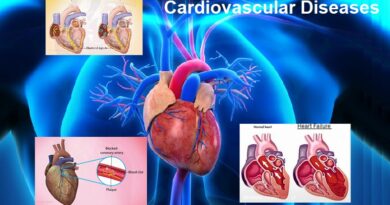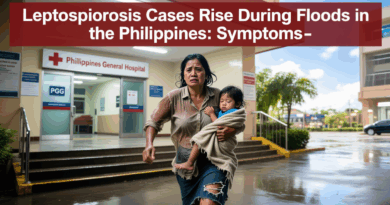Malaria: Causes, Symptoms, and Treatment
Malaria is a deadly disease that affects millions of people every year, particularly in tropical and subtropical regions. It is caused by a parasite called Plasmodium, which is transmitted to humans through the bites of infected female mosquitoes. This disease can cause severe flu-like symptoms, and if left untreated, it can lead to complications that can be fatal. In this article, we will explore what malaria is, its causes, symptoms, and treatment options.
What is Malaria?
Malaria is a parasitic infection that affects the blood and is transmitted through the bites of infected female mosquitoes. There are four types of Plasmodium parasites that can cause malaria in humans: Plasmodium falciparum, Plasmodium vivax, Plasmodium ovale, and Plasmodium malariae. Among these, P. falciparum is the most deadly and is responsible for most malaria-related deaths worldwide.
Malaria is prevalent in tropical and subtropical regions of the world, particularly in Africa, Asia, and South America. According to the World Health Organization (WHO), there were an estimated 229 million cases of malaria worldwide in 2019, resulting in 409,000 deaths. Children under the age of five are particularly vulnerable to the disease, and it is estimated that one child dies from malaria every two minutes.
Causes of Malaria
As mentioned earlier, malaria is caused by the Plasmodium parasite, which is transmitted to humans through the bites of infected female mosquitoes. When an infected mosquito bites a human, the parasite enters the bloodstream and travels to the liver, where it multiplies and matures. After a few days, the mature parasites leave the liver and enter the bloodstream, where they infect red blood cells.
Once inside the red blood cells, the parasites multiply rapidly and cause the cells to burst, releasing more parasites into the bloodstream. This process leads to the destruction of red blood cells, which can cause anemia and other complications. The symptoms of malaria are a result of the body’s immune response to the infection and the destruction of red blood cells.
Symptoms
The symptoms can vary depending on the type of parasite causing the infection, the person’s immune system, and other factors. Some people may experience mild symptoms, while others may develop severe complications that can be life-threatening. The symptoms typically appear 10-15 days after the mosquito bite and can include:
- Fever
- Chills
- Headache
- Muscle aches
- Fatigue
- Nausea and vomiting
- Diarrhea
- Anemia
- Jaundice (yellowing of the skin and eyes)
- Seizures
- Coma
If left untreated, It may lead to severe complications such as cerebral malaria, which can cause brain damage and even death.
Treatment
Early diagnosis and prompt treatment are essential to successfully treating malaria and preventing complications. The treatment of malaria typically involves antimalarial medications that can kill the parasites in the blood. The choice of medication depends on the type of parasite causing the infection and the severity of the symptoms.
In some cases, hospitalization may be necessary, especially if the person has severe symptoms or complications. Treatment may also involve supportive care, such as intravenous fluids and blood transfusions, to manage the symptoms and prevent complications.
Prevention
Preventing mosquito bites is the most effective way to prevent malaria. This can be done by:
- Using insect repellent containing DEET, picaridin, or other EPA-registered ingredients
- Wearing long-sleeved shirts and pants, especially at night
- Using bed nets treated
Summary
Malaria is a deadly parasitic infection transmitted by mosquitoes. It causes flu-like symptoms, and anemia, and can lead to severe complications if left untreated. Treatment involves antimalarial medications and supportive care, while prevention includes avoiding mosquito bites.
If you have questions you can drop them below in the comment section. You can contact us here: Google page – Helalmedical, or Facebook page. We offer quick and convenient testing options.




